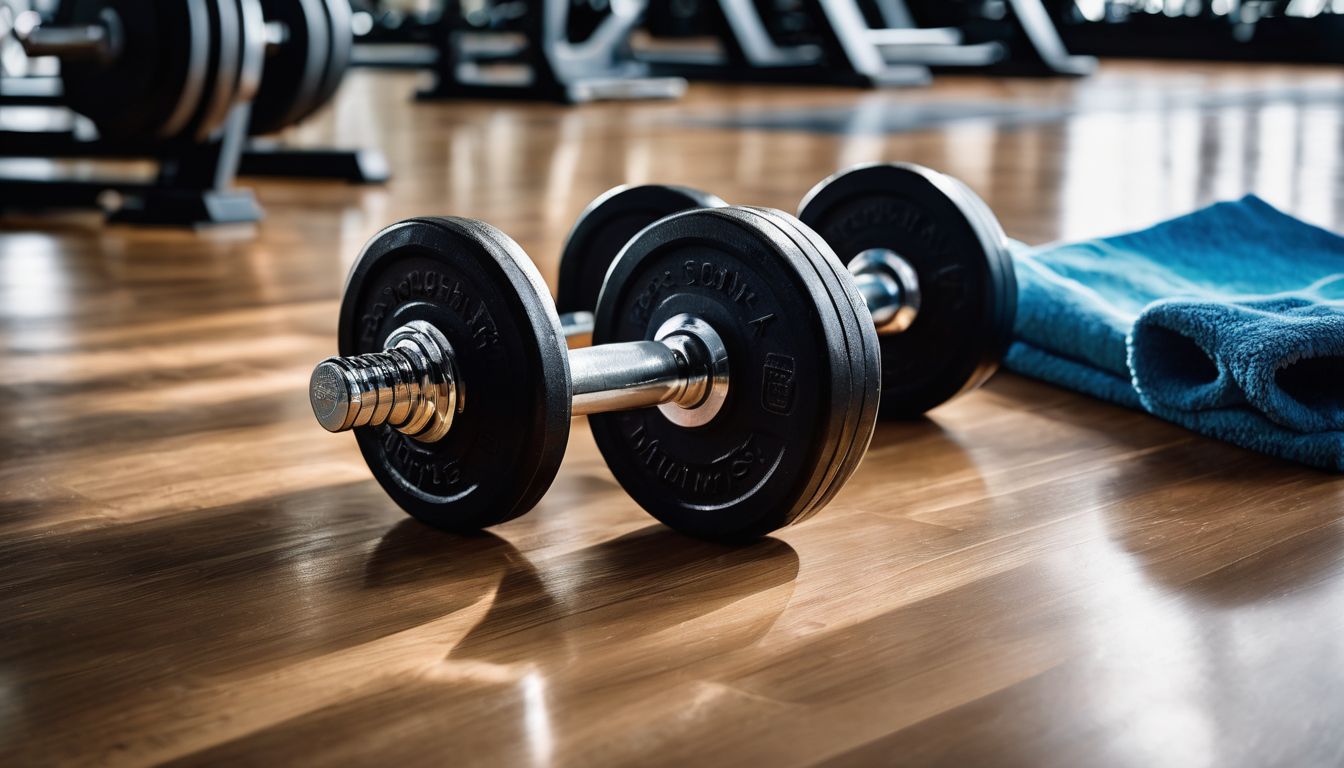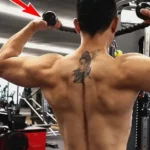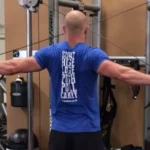Struggling to strengthen your shoulders? Dumbbell shoulder fly exercises are key for building upper body power. Our guide digs into techniques and tips that will transform your workout routine, ensuring you target those muscles effectively.
Dive in for a stronger you!
The Importance of Shoulder Fly Exercises
Shoulder fly exercises target the deltoid muscles, helping to improve shoulder strength and stability. Additionally, these exercises can enhance overall upper body strength and promote better posture.
Muscles worked

Dumbbell shoulder fly exercises focus on your upper body. They work your deltoids, which are the main shoulder muscles. But that’s not all. Other muscles like your trapezius, rhomboids, and upper back also get in on the action.
These workouts help build strong shoulders. You use them for lifting things every day. As you keep doing these exercises, you’ll notice better muscle shape and more power for pushing and pulling stuff around.
This is because dumbbell shoulder flys make those key muscles stronger and tougher over time.
Benefits
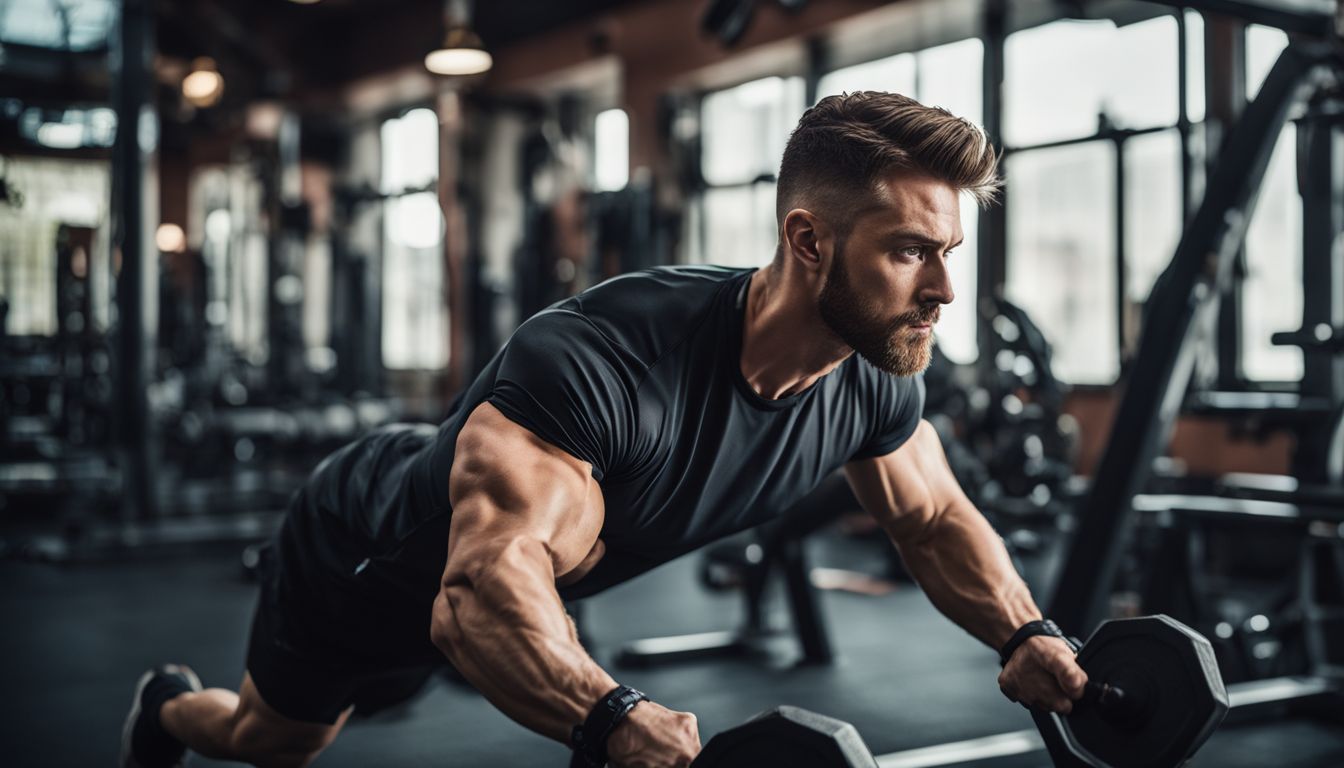
The dumbbell shoulder fly is great for making your upper body strong. It works many muscles and helps you in different ways.
- Focus on shoulder muscles: This exercise mainly hits your deltoids, which are the big muscles on the top of your shoulders.
- Engages more than shoulders: While doing shoulder flys, other muscles like your trapezius, rhomboids, and upper back come into play, helping keep everything strong and balanced.
- Better posture: Stronger back and shoulder muscles lead to better posture. This means you might stand taller and look better.
- Shoulder health: Having stronger shoulders can protect you from injuries. You need this for sports and daily tasks that use your arms a lot.
- Flexibility boost: As you lift the weights in the correct way, your shoulder joints move through a full range. This keeps them flexible.
- Customizable workout: You can change up how you hold the weights or where your arms go to focus on different parts of the shoulder.
- Can increase stability: Doing this exercise helps with how stable your shoulders are, which is important for all kinds of movements.
How to Properly Perform the Dumbbell Shoulder Fly
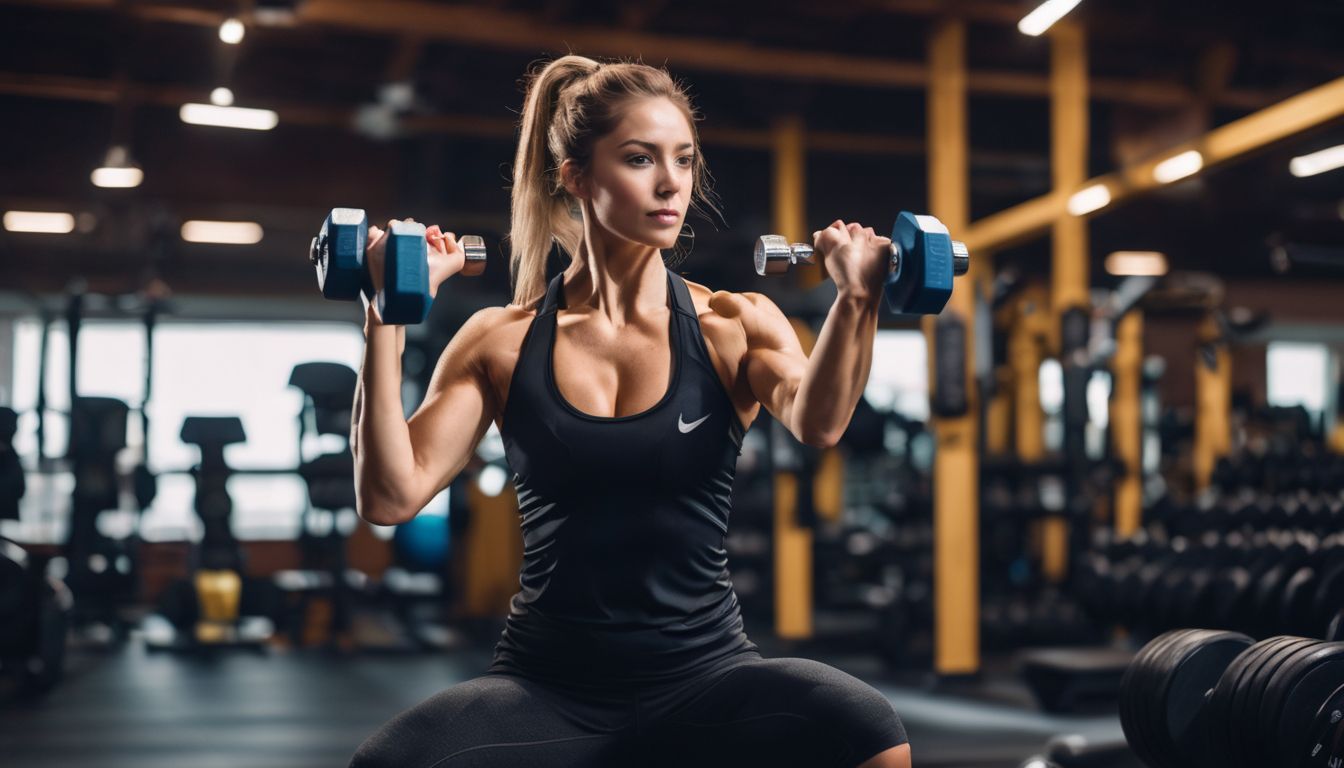
To properly perform the dumbbell shoulder fly, it’s important to maintain proper form and technique. This can be done through standing variations, seated variations, or head-supported variations to target different areas of the shoulders effectively.
Standing variation
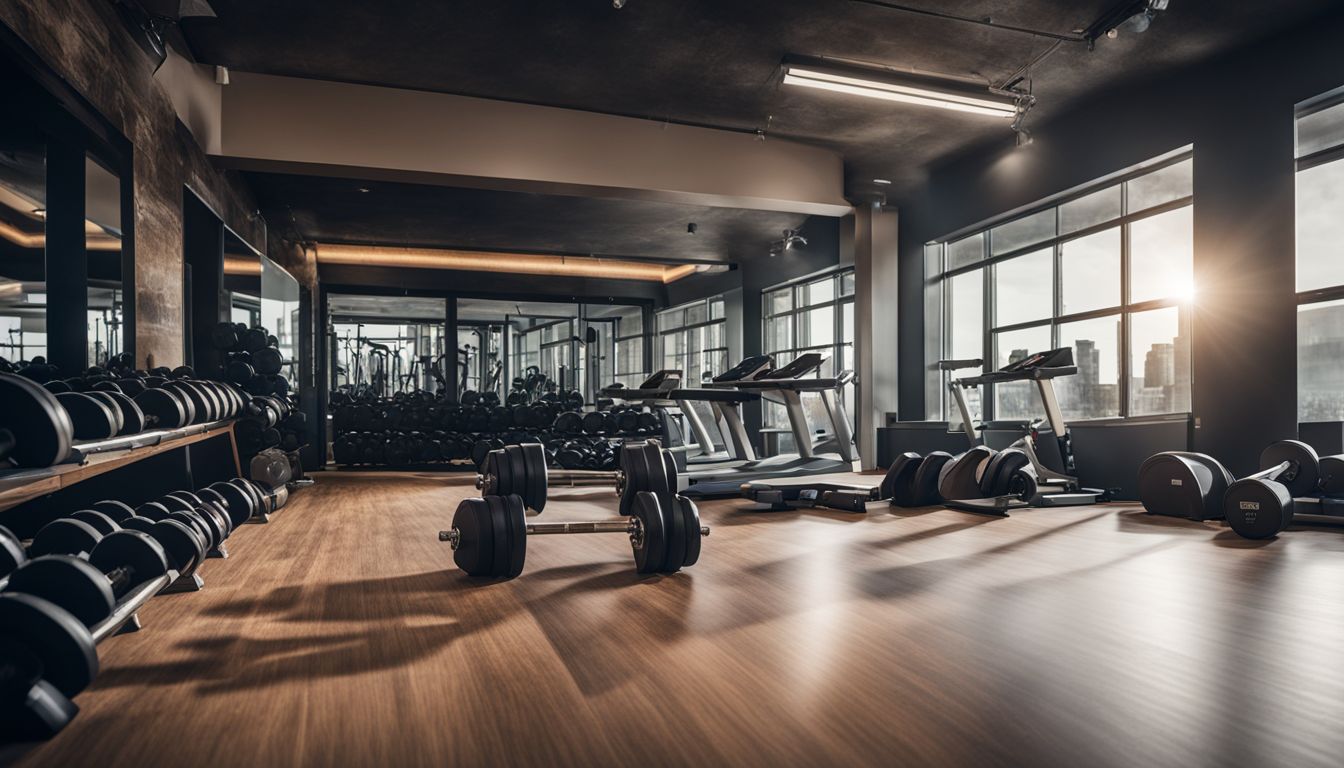
The standing variation of the dumbbell shoulder fly helps build upper body strength. It focuses on your shoulder muscles, especially the deltoids.
- Stand up straight with your feet shoulder – width apart. Hold a dumbbell in each hand.
- Keep your arms slightly bent at the elbows. This will be your starting position.
- Lift the weights out to your sides until they are level with your shoulders.
- Breathe out as you lift the dumbbells, using a smooth and steady motion.
- Pause for a second when your arms are parallel to the floor.
- Slowly lower the dumbbells back to the starting position while breathing in.
- Make sure not to swing the weights or use momentum to lift them.
- Focus on keeping a slow and controlled movement throughout the exercise.
- Choose a weight that you can handle without straining. It should let you do all movements properly.
- Start with fewer repetitions and increase them as you get stronger.
Seated variation
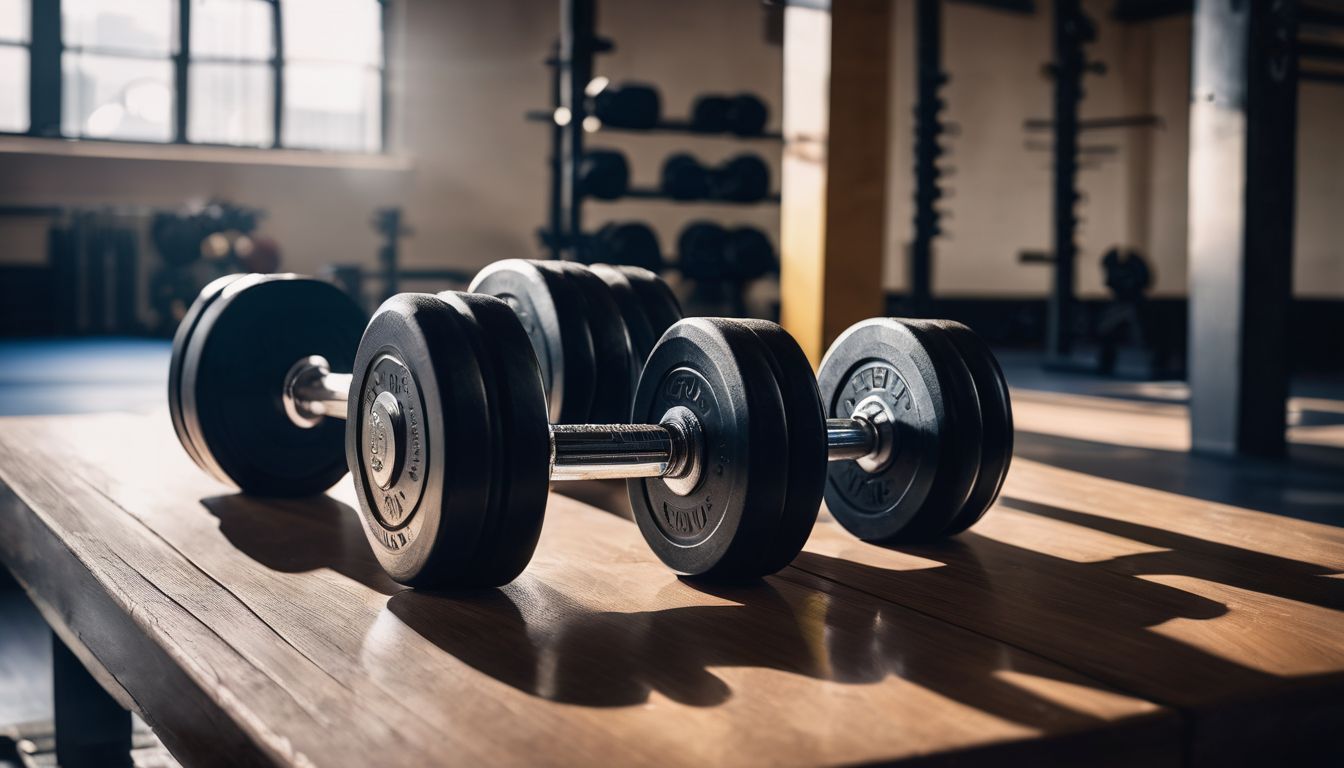
The seated variation of the dumbbell shoulder fly is a great way to target the shoulder muscles while providing stability and support for your back. The exercise also engages the trapezius, rhomboids, and upper back muscles.
- Sit on a flat bench with a dumbbell in each hand, and ensure your feet are firmly planted on the ground.
- Hold the dumbbells at your sides with your palms facing inwards and maintain a slight bend in your elbows.
- Slowly raise the dumbbells to shoulder level, making sure to keep your elbows slightly bent throughout the movement.
- Focus on engaging your shoulder muscles as you lift the weights, and exhale during this phase of the exercise.
- Lower the dumbbells back down to starting position in a slow and controlled manner while inhaling.
Head-supported variation

The head-supported variation of the dumbbell shoulder fly involves lying face down on an incline bench. This position helps stabilize the upper body and focuses the movement on the shoulders.
- Lie face down on an incline bench set at a low angle, ensuring that your head is fully supported by the bench.
- Hold a dumbbell in each hand with your palms facing each other and allow your arms to hang straight down toward the floor.
- Engage your core and initiate the movement by raising your arms out to the sides until they are parallel to the ground.
- Slowly lower the weights back to the starting position, maintaining control throughout the motion.
- Focus on keeping your neck and head in a neutral position to avoid unnecessary strain.
Proper Form and Common Mistakes

Proper form is essential for a shoulder fly exercise to effectively target the intended muscles. Common mistakes include rounding the back, swinging the weight, and lifting too heavy, which can lead to injury or reduced effectiveness of the exercise.
Rounding the back

Rounding the back during dumbbell shoulder fly exercises can strain the spine and reduce the effectiveness of the workout. It’s essential to maintain proper posture with a straight back while performing this exercise, to prevent injury and ensure maximum engagement of the targeted shoulder muscles.
Rounding the back may lead to undue stress on the lower back, detracting from the focus on strengthening and stabilizing the shoulders.
By keeping your back straight throughout the exercise, you can effectively isolate and work your shoulder muscles without risking potential injury or discomfort. This will support better overall form and help you derive optimal benefits from each repetition.
Ensuring a straight back also promotes spinal health by preventing unnecessary strain during workouts.
Swinging the weight

Swinging the weight while performing dumbbell shoulder flys can reduce the effectiveness of the exercise and increase the risk of injury. It’s important to maintain control throughout the movement, avoiding any swinging or momentum that takes away from targeting the shoulder muscles properly.
Engaging in a slow and controlled motion with proper form not only maximizes muscle engagement but also reduces strain on other parts of the body.
To ensure maximal benefits from dumbbell shoulder flys, it’s crucial to focus on maintaining a steady pace without any swinging movements. Moving onto “Lifting too heavy,” let’s explore how choosing an appropriate weight can impact your shoulder fly exercises.
Lifting too heavy
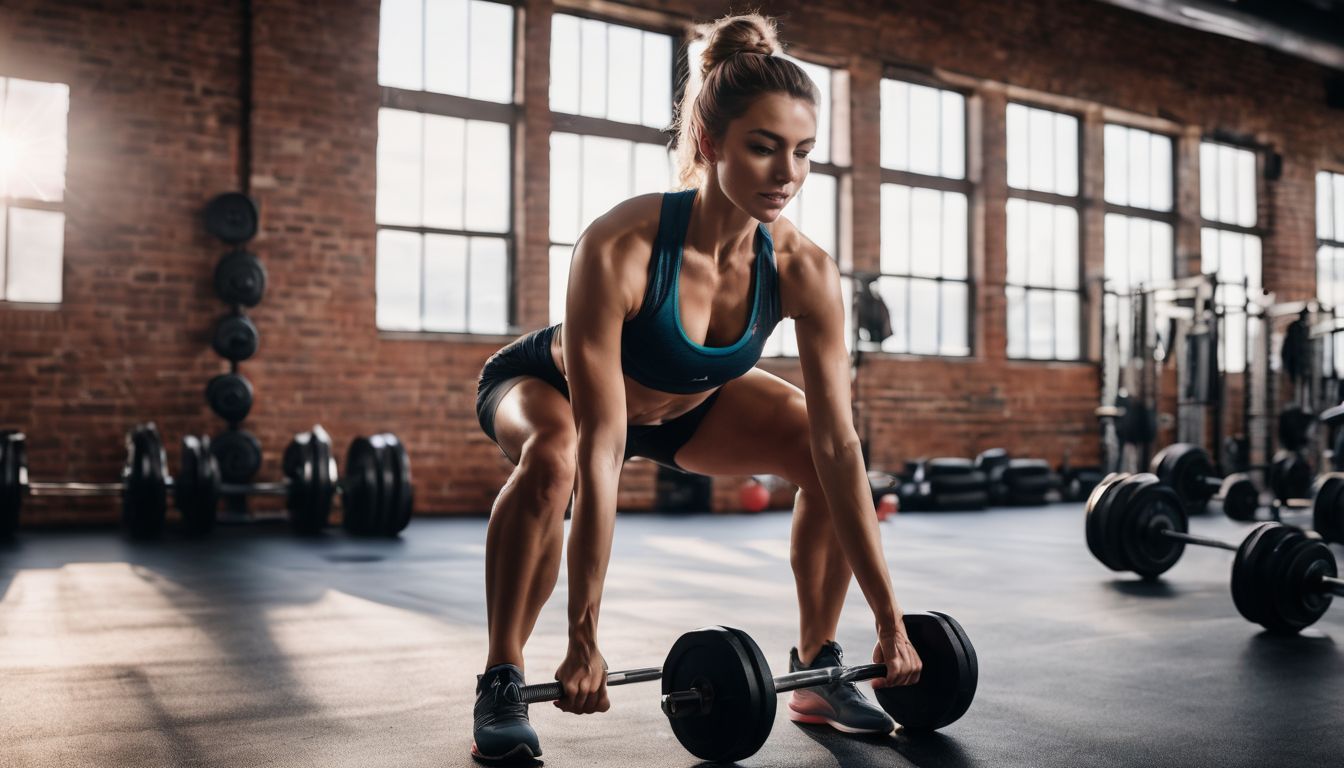
When lifting too heavy, the risk of injury increases. It’s important to start with a manageable weight and gradually increase to avoid straining the muscles. Proper technique and controlled movements are crucial for muscle engagement and injury prevention.
Remember that slow, controlled movements prevent swinging the weight and ensure proper muscle activation. Exhaling during exertion can also enhance effectiveness, while consulting a fitness professional provides guidance on form and technique.
Starting with a manageable weight is safer and allows for progression as strength improves.
Safety and Precautions

Proper warm-up and weight selection are essential for a safe and effective shoulder fly workout. For more tips on safety and precautions, keep reading.
Proper warm-up

Start your shoulder workout with a proper warm-up to prepare the muscles for exercise and reduce the risk of injury. This can include dynamic movements like arm circles, shoulder rolls, and gentle stretches to increase blood flow and flexibility in the shoulders.
Additionally, incorporating resistance band exercises such as external rotations and diagonal patterns can activate the smaller stabilizing muscles around the shoulders, promoting better overall joint stability.
Engaging in a 5-10 minute cardiovascular activity such as brisk walking or cycling can also raise body temperature and prime the body for more intense movements. With a well-planned warm-up routine, you can optimize your performance during shoulder fly exercises while safeguarding yourself against potential strains or injuries.
Proper weight selection
Choose a weight that you can lift with control. Starting light is okay, you can always increase as your strength improves. Gradually add more weight as needed to challenge yourself and continue making progress.
It’s important to select a manageable weight when starting out to avoid strain or injury.
Variations of Shoulder Fly Exercises
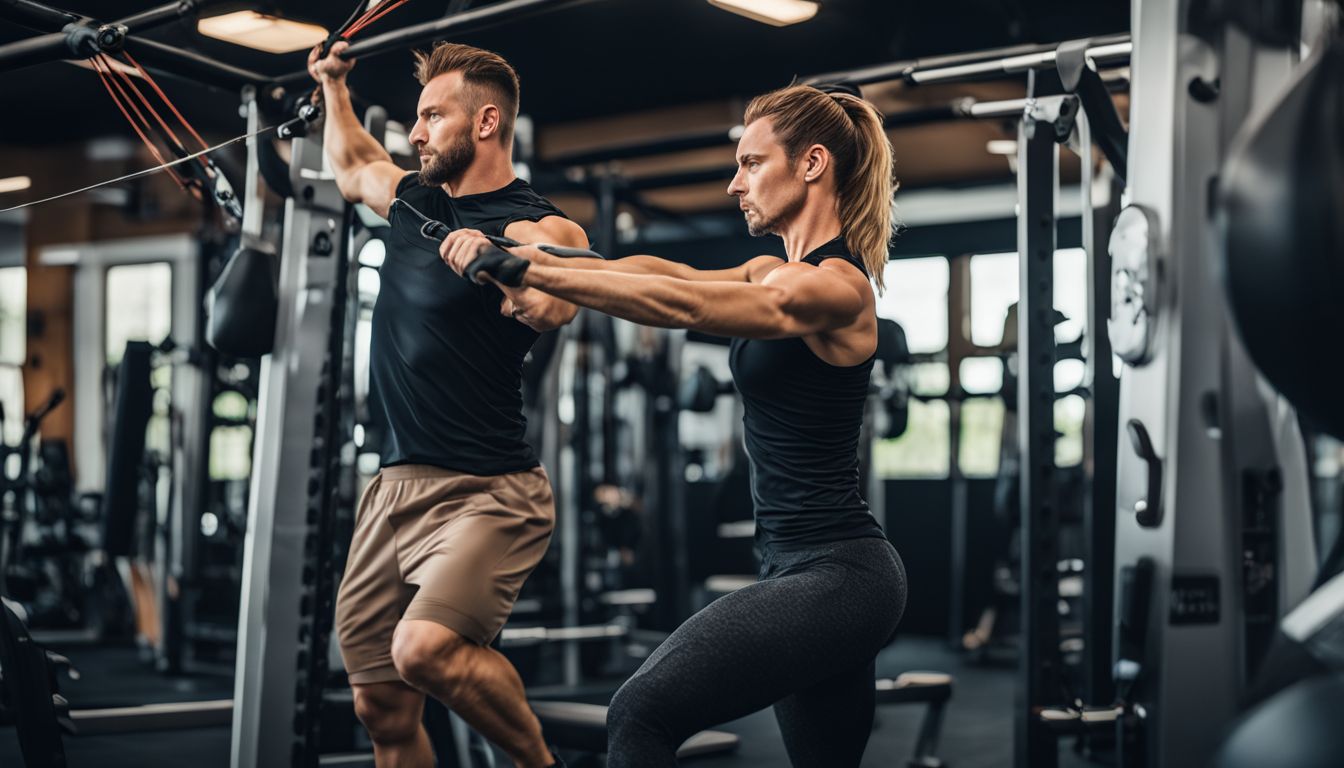
Explore different variations of shoulder fly exercises such as the cable shoulder fly, shoulder fly with plates, and machine fly to add variety and challenge to your workout routine.
To learn more about these effective variations, keep reading!
Cable shoulder fly
The cable shoulder fly is an effective variation of the dumbbell shoulder fly. It provides constant tension on the shoulder muscles throughout the movement.
- Using a cable machine, stand with feet shoulder – width apart and grab the handles with an overhand grip.
- With a slight bend in your elbows, bring your arms forward and upward to form a T shape at shoulder height.
- Slowly return to the starting position, resisting the weight’s pull to maintain tension on the shoulders.
- The cable shoulder fly allows for a smooth and controlled range of motion, targeting the deltoids and promoting shoulder stability.
- To optimize results, focus on proper form, gradual weight progression, and controlled breathing throughout the exercise.
- Incorporating cable shoulder flys into your workout routine can enhance overall shoulder strength and mobility while reducing the risk of muscle imbalances or injury.
- The exercise lends itself well to variations in hand grips and cable heights for targeting different areas of the shoulder muscles effectively.
- Consulting a fitness professional for guidance on correct technique is advisable to maximize benefits while minimizing the risk of injury.
Shoulder fly with plates
The shoulder fly with plates is a strength-training exercise for the shoulders. It can be performed using weight plates in place of dumbbells or resistance bands.
- Start by holding a weight plate in each hand, standing with feet shoulder – width apart and knees slightly bent.
- Lift the weight plates to the sides until they reach shoulder level, keeping a slight bend in the elbows throughout the movement.
- Lower the weight plates back down in a slow and controlled manner, resisting gravity to engage the muscles fully.
- Focus on maintaining proper form and posture throughout the exercise to prevent injury and ensure muscle activation.
- Engage the shoulder muscles by visualizing lifting through the side of the shoulders while performing this exercise.
- Ensure that both arms move symmetrically and avoid any jerky or uncontrolled movements while lifting and lowering the weight plates.
- Gradually increase the weight of the plates as strength improves, but always prioritize proper form over heavier weights.
- Incorporate proper breathing techniques by exhaling during exertion and inhaling during relaxation to optimize muscle engagement.
Machine fly
The machine fly is an alternative exercise that targets the chest and shoulder muscles. It is performed using a machine equipped with two independent levers or handles.
- The machine fly helps to isolate the chest and shoulder muscles, allowing for controlled movements and reduced strain on the joints.
- By adjusting the position of the handles or levers, different parts of the chest and shoulders can be targeted, providing versatile workout options.
- Proper form is crucial in using the machine fly to prevent injury and ensure maximum benefit. Maintaining a stable posture and controlling the movement is essential.
- The machine fly can complement dumbbell exercises by offering a different range of motion and resistance, contributing to a well-rounded upper body workout routine.
- As with any exercise, it is important to start with a manageable weight and gradually increase as strength improves to avoid strain or injury.
Alternatives to Shoulder Fly
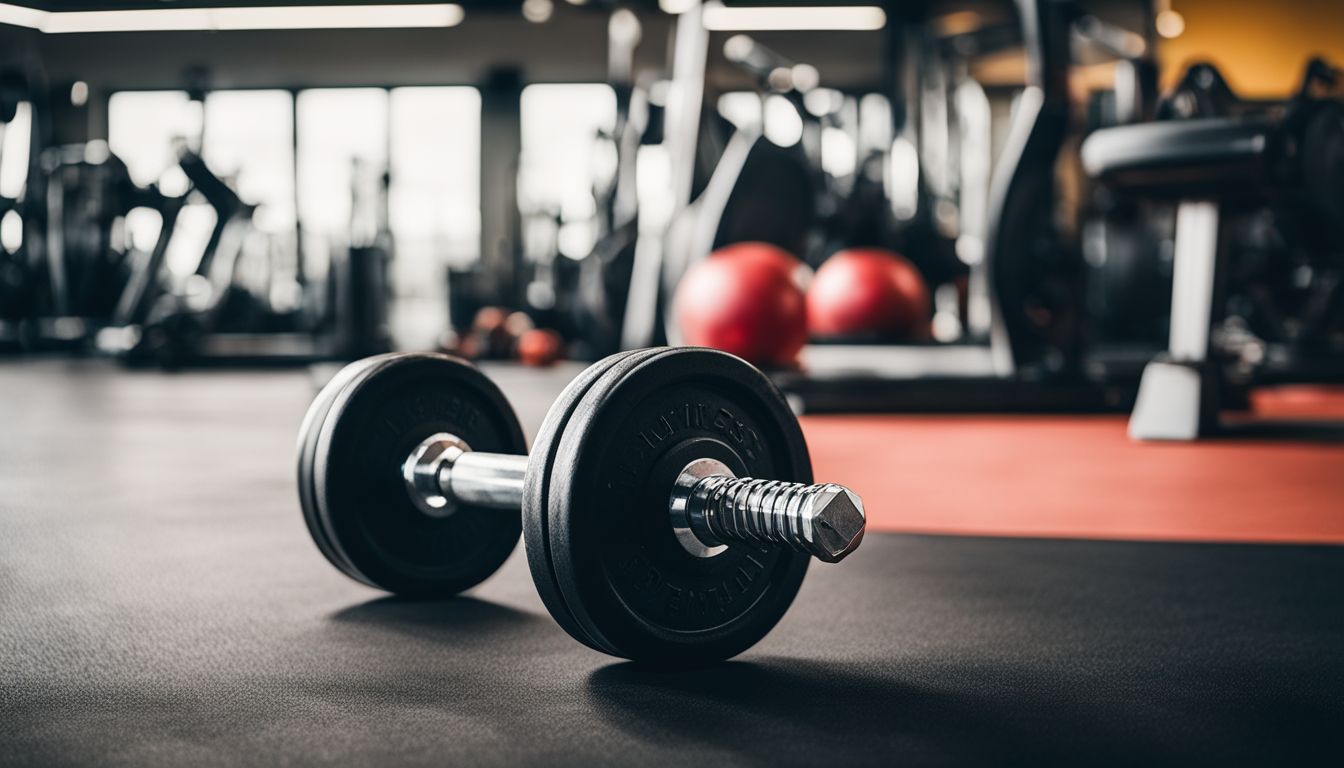
Consider incorporating the dumbbell reverse fly into your routine to target different muscles in the shoulder and upper back. There are also various other dumbbell shoulder exercises that can provide a similar workout to the shoulder fly, allowing for variety in your training regimen.
Dumbbell reverse fly
The dumbbell reverse fly is a great exercise for targeting the rear deltoid muscles, helping to strengthen and stabilize the shoulders.
- Muscles Targeted: The dumbbell reverse fly primarily works the posterior deltoids, as well as the upper back muscles including the rhomboids and trapezius.
- Form and Technique: To perform this exercise, stand with feet shoulder-width apart, hold a dumbbell in each hand, and bend forward at the hips. Then, lift the dumbbells out to the sides while keeping a slight bend in the elbows.
- Avoiding Mistakes: It’s important to maintain a neutral spine and avoid arching or rounding the back during the movement. Additionally, ensure that you do not swing or use momentum to lift the weights.
- Weight Selection: Start with lighter weights to ensure proper form and gradually increase weight as strength improves.
- Breathing Technique: Exhale as you lift the weights outwards and inhale as you lower them back down to maximize muscle engagement.
- Variations: The exercise can be performed using different hand grips, such as palms facing each other or thumbs pointing up, to target different areas of the rear delts.
- Consultation: If unsure about proper form, seeking guidance from a fitness professional or personal trainer is advisable.
- Incorporating into Workout: Including dumbbell reverse flys in an upper body workout routine can help improve shoulder stability and overall upper body strength.
Other dumbbell shoulder exercises
After you’ve mastered the dumbbell reverse fly, you can incorporate other effective dumbbell shoulder exercises into your routine. These exercises target different areas of the shoulder muscles and can help in overall shoulder strength and stability. Here are some other dumbbell shoulder exercises to consider:
- Dumbbell Shoulder Press: This exercise works the deltoid muscles and helps in building overall shoulder strength.
- Dumbbell Lateral Raise: This exercise primarily targets the lateral deltoid head, helping to widen the shoulders.
- Dumbbell Chest Press: While it mainly targets the chest muscles, it also engages the anterior part of the deltoids, contributing to overall shoulder development.
- Dumbbell Shoulder Shrug: This exercise focuses on building strength in the trapezius muscles, which play a significant role in supporting the shoulders.
- Arnold Press: Named after Arnold Schwarzenegger, this exercise involves a rotation of the wrists as you press the dumbbells upward, engaging multiple parts of the shoulders.
- Front Raise: By lifting dumbbells directly in front of you, this exercise works on the anterior deltoids for balanced shoulder development.
Tips for Maximum Results

To maximize the results of your dumbbell shoulder fly exercises, it’s important to carefully consider your set, reps, and frequency. Different variations suit different fitness levels, so choosing the right alternative exercise is key to progress effectively.
Set, reps, and frequency
To get the best results from dumbbell shoulder flys, it’s important to consider the number of sets, reps, and frequency. Here’s a breakdown for maximum effectiveness:
- Aim for 2 – 3 sets of dumbbell shoulder flys per workout session.
- Perform 8 – 12 repetitions in each set to effectively target and engage the shoulder muscles.
- For optimal results, aim to incorporate dumbbell shoulder fly exercises into your routine 1 – 2 times per week.
Beginner, intermediate, and advanced variations
Understanding the different variations of the dumbbell shoulder fly is crucial for engaging the deltoid muscles effectively while ensuring progression and avoiding plateaus. Beginners should start with lighter weights and simpler movements, while intermediate and advanced practitioners can increase the intensity and complexity. Below is an HTML table that illustrates the progression from beginner to advanced variations of the exercise.
| Level | Variation | Description |
|---|---|---|
| Beginner | Seated Dumbbell Shoulder Fly | Start with a manageable weight. Perform the movement seated to maintain better control and stability. Focus on mastering the technique with a slower tempo. |
| Intermediate | Standing Dumbbell Shoulder Fly | Transition to standing position to engage core muscles for balance. Gradually increase weight while maintaining proper form. Implement a moderate tempo. |
| Advanced | Head-Supported Dumbbell Shoulder Fly | Use a bench for head support to isolate shoulder muscles further. Increase weight for muscle growth. Integrate a controlled yet challenging tempo. |
The seated variation helps beginners hone their technique without the added challenge of balance. Moving to a standing position increases engagement of the core and stabilizers, preparing for more advanced techniques. Advanced individuals utilize the head-supported variation for intense focus on the delts, while safely managing heavier weights. Engaging in these variations contributes to enhanced shoulder stability and a well-rounded upper body workout routine. Always select the appropriate weight and focus on controlled movements to prevent injury and maximize muscle activation.
Choosing the right alternative exercise.
When it comes to choosing the right alternative exercise for shoulder fly, the dumbbell reverse fly stands out as an excellent option. This exercise targets the rear delts and upper back muscles, providing a well-rounded workout for your shoulders.
Additionally, incorporating other dumbbell shoulder exercises such as lateral raises and shoulder presses can further strengthen different areas of the shoulder muscles, promoting overall stability and mobility.
By including these alternative exercises in your routine, you can ensure that all aspects of your shoulder muscles are effectively targeted, leading to improved strength and functionality.
Conclusion
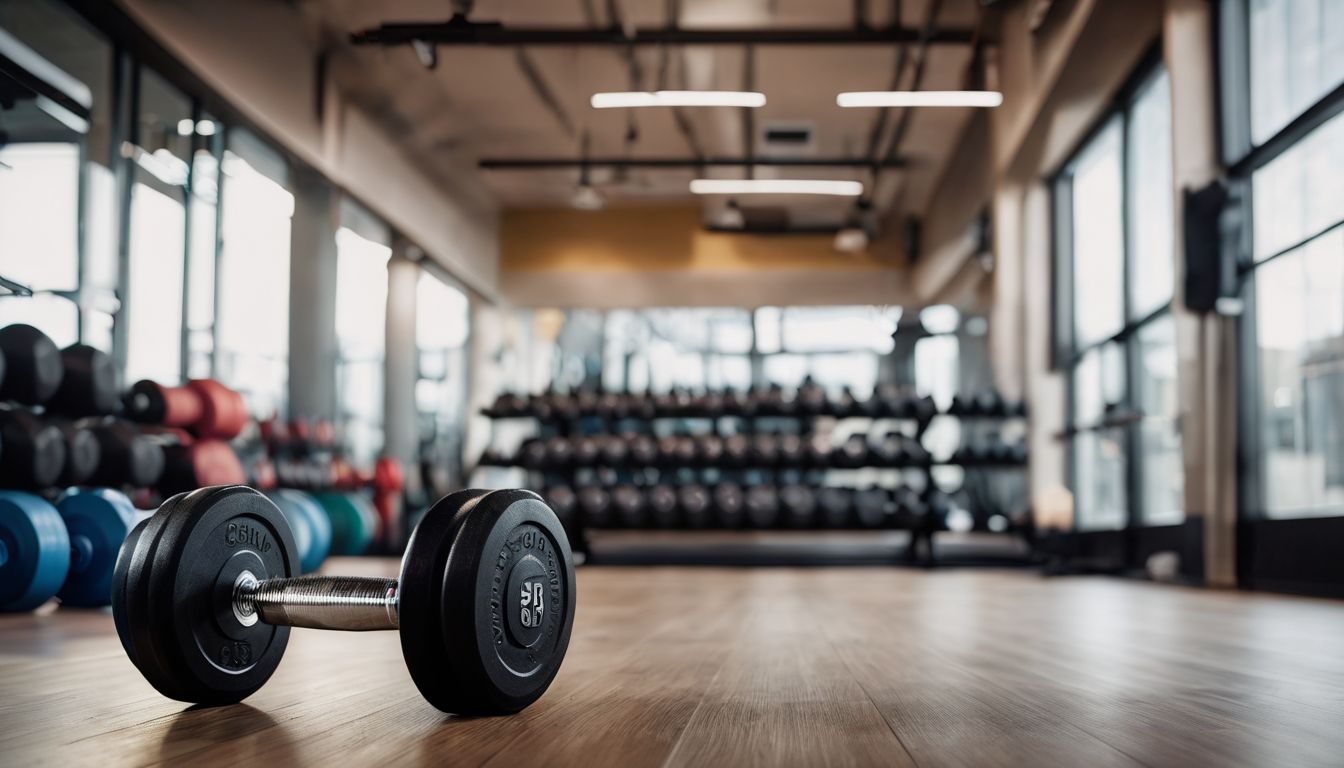
In conclusion, the dumbbell shoulder fly is a powerful exercise for strengthening the upper body. It targets key shoulder muscles, promoting strength and stability. Proper technique and gradual weight progression are essential to prevent injury and maximize results.
Integrating this exercise into your workout routine can enhance overall shoulder strength and mobility, leading to improved fitness levels over time.
